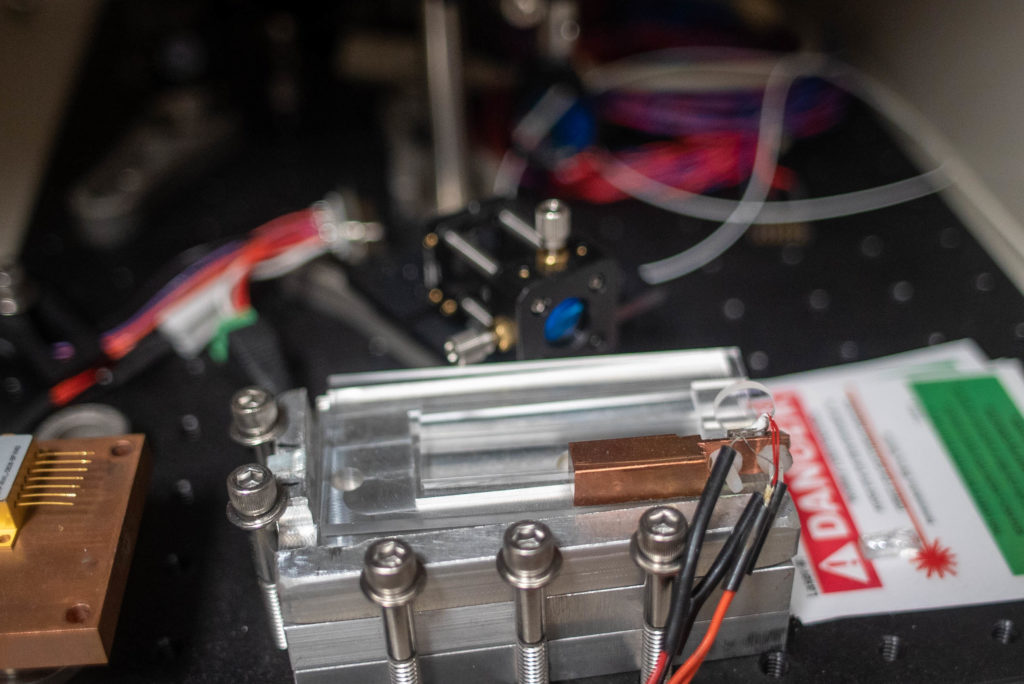Optomechanical LASER

Working:
- This system integrates the laser onto the frame and test mass of the resonator.
- An optical cavity comprised of at least two mirrors is required to create a laser. Out of these two, one mirror is attached to the fixed frame of the resonator, whereas the other mirror is attached to the dynamic test mass.
- As the test mass moves, the length of the cavity changes also. When the cavity of a laser changes length, the wavelength of the light that is emitted changes proportional to that length change.
- By measuring the output wavelength of the laser, we can determine cavity length change, and therefore the displacement of the test mass.
Results:
- This system has already produced results that prove the concept of encoding low-frequency motion into the output wavelength.
Application:
- This system has applications in inertial sensing and gravimetry.

Researchers Involved:
Relevant Publications:
- Optomechanical lasers for inertial sensing – H Wisniewski, L Richardson, A Hines, A Laurain, F Guzman

